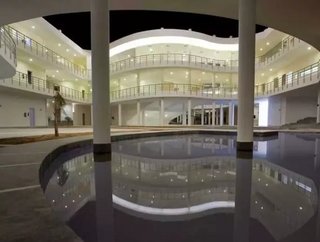Ancient Passive Cooling Designs Provide Insight

Click here to experience this article in our digital reader
Scorching heat and energy outages are quickly becoming a new reality for many people across the U.S. Last month, many suffered through some of the worst heat in the country's history without electricity. From Illinois to Virginia, hundreds of thousands of customers went without air conditioning for days as utilities scrambled to restore power.
What is becoming more apparent than ever is that many of today's “modern” buildings and homes weren't designed to handle the that kind of heat. Before the days of air conditioning, refrigerators and electrically powered fans, passive cooling techniques were used in architecture as salvation from the summer's sun. As sustainability becomes a growing concern for many designs, these techniques are starting to see a rebirth in today's green building scene. Fortunately, they can be quite beautiful too.
Read More in Energy Digital's Hottest Summer Issue
Stepwells
Most common in India, stepwells are small bodies of water created below ground or surrounded by walls above the ground. As the water evaporates in the enclosed area, it cools down adjacent spaces. In modern architecture, recycled water will do the trick too.
Architect Manit Rastogi tells CNN: "How did they think up something so elaborate and yet so simple in its basic philosophy? How do you begin to think that you can dig into the ground and use the earth as a heat sink, have access to water, put a pavilion into it so that its comfortable through the year? It takes a lot of technology for us to think up something that simple now."

Windcatchers
To accomplish a natural indoor breeze, windcatchers are used to literally “catch” the wind and create air flow inside buildings. Extensively used in the Middle East, this technique can also function in one or more of three ways. When wind enters directly through a tall, capped tower with an opening, it creates a downward flow of air, or a natural breeze. As cool air from below fills the void, it allows for dense hot air to escape through the tunnel. Conversely, hot air may be pulled through the tunnel, where it is cooled in an underground space (sometimes with the use of water).

Perforated Double Skinned Exterior
Dressing the exterior of a building with a perforated screen is another highly effective and simple passive cooling technique. The extra wall helps diffuse natural daylight, while providing shade and illumination to indoor spaces. Placing one four feet outside the outer walls of a building also provides a hallway filled with natural air circulation.
The Pearl Academy of Fashion in Jaipur, India makes use of a couple of these techniques, including the perforated screen and a modern version of the stepwell to cool its indoor spaces. With an average daytime temperature of 113 F, those techniques are especially critical.
Just as Kris De Decker of No Tech Magazine “refuses to assume that every problem has a high-tech solution,” perhaps its time to start using a few old tricks to create a more bearable future in response to the environmental changes occurring at a rapid rate.







